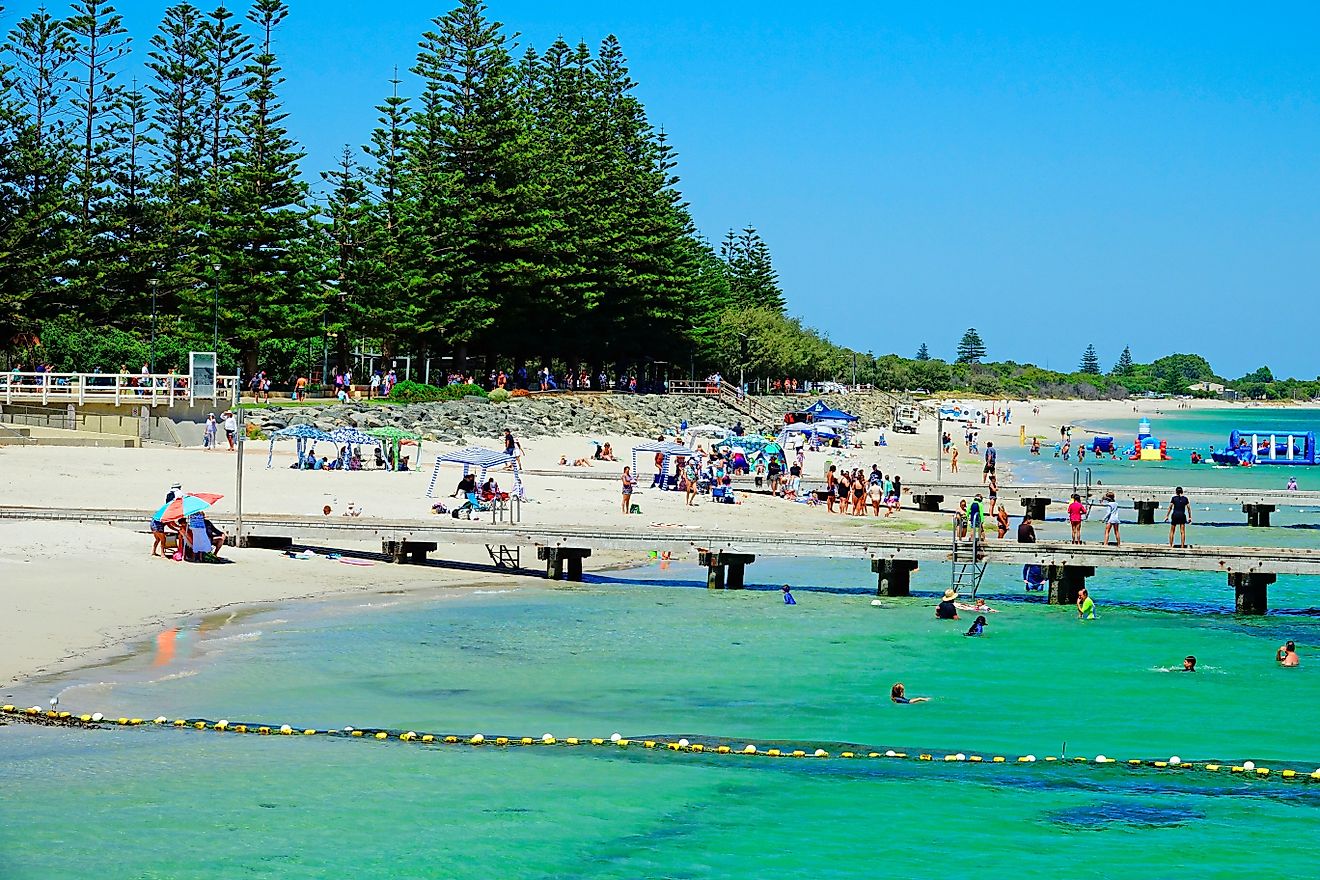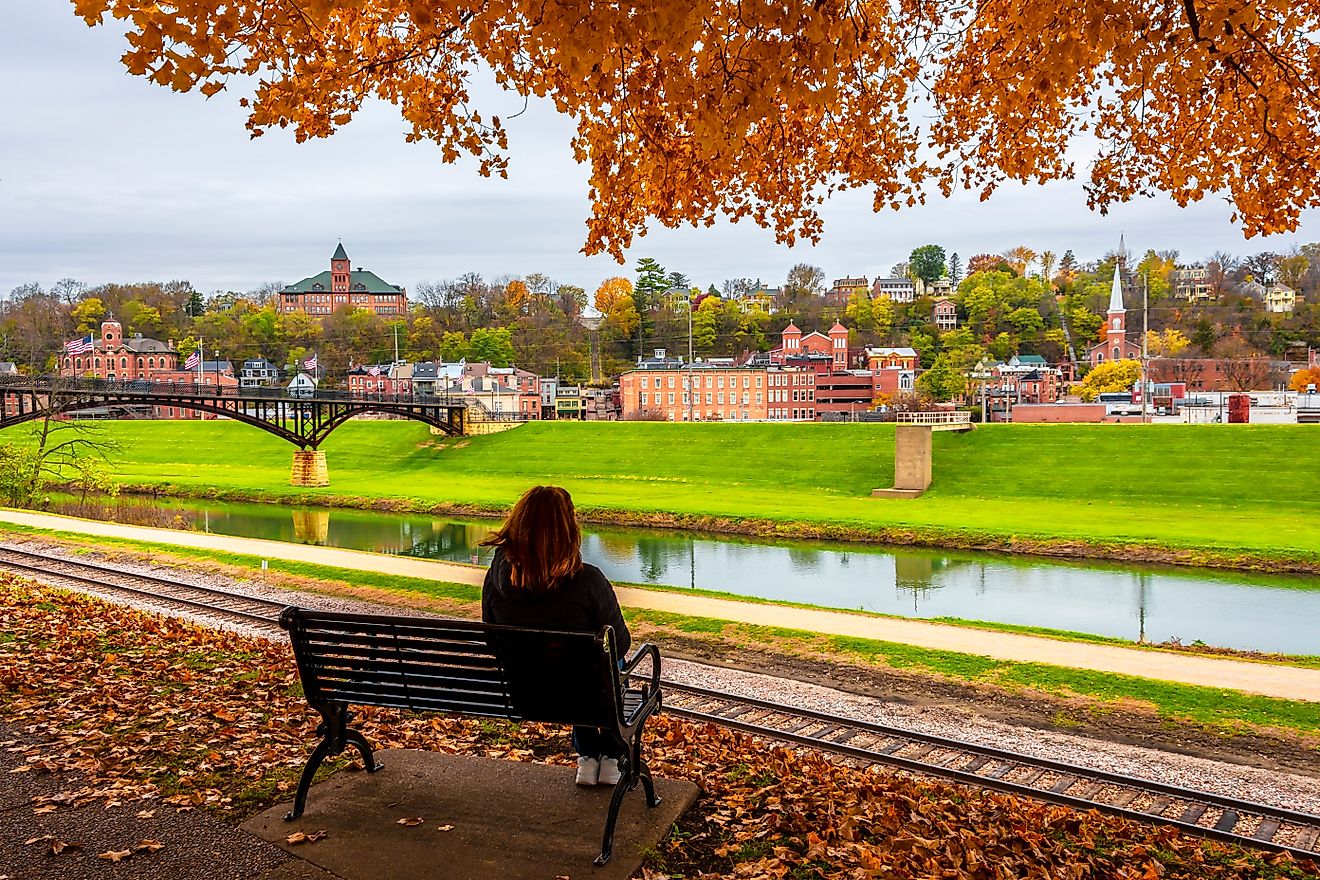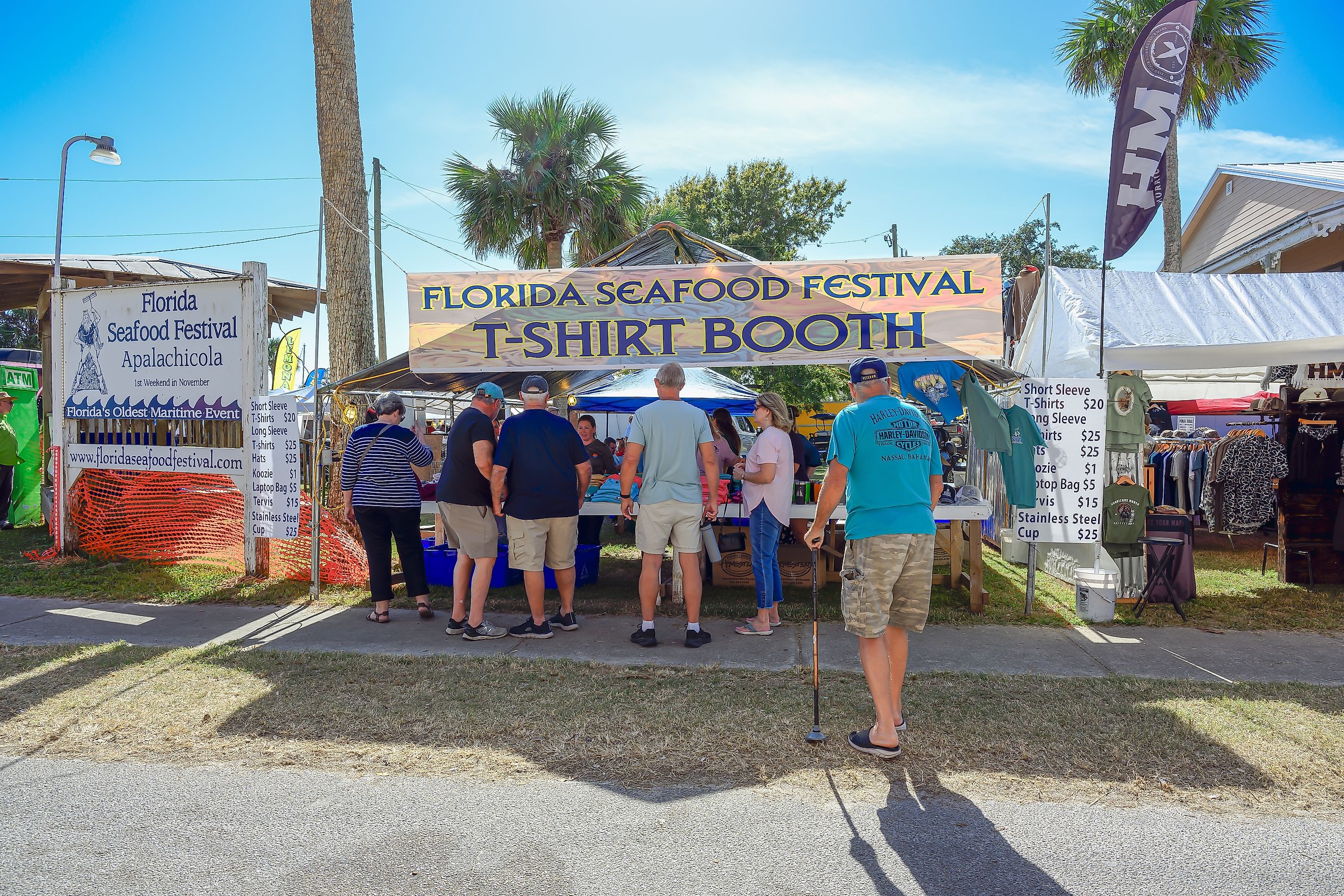
10 Most Welcoming Towns In Florida's Countryside
Highways carve lazy zig-zags across inland Florida, and a curious thing happens the moment you leave the interstates: the "porch-wave index" spikes. Sheriff's cruisers tap the siren just to say hello, café owners slide a slice of key-lime pie to anyone still studying the menu, and total strangers volunteer river-level reports before you can unfold the maps app. Hospitality, here, is less a marketing slogan than a reflex. Yet the media lens stays fixed on sand and skyline, missing the villages where welcome is woven into everyday ritual.
So we ran a different experiment. We logged many miles on two-lane roads, rating stops not by resort count or Instagram hashtags but by friendliness and warmth. Ten towns emerged where newcomers are folded in as naturally as Spanish moss drapes a fence rail.
Cedar Key

Cedar Key rests on a cluster of oyster-shell islands 60 miles west of Gainesville. Its year-round population stays below seven hundred, yet it remains Levy County's oldest incorporated municipality. Nineteenth-century mills here supplied Dixon and Faber pencil plants, leaving pine pilings that still shoulder the incoming tide, while today's shellfish farmers ship twenty million "Cedar Key Sweet" littleneck clams each year. Every June the school band leads a graduation flotilla down Dock Street, seniors riding shrimp boats beneath cypress-bough arches, an open-air rite that welcomes onlookers as readily as lifelong residents.
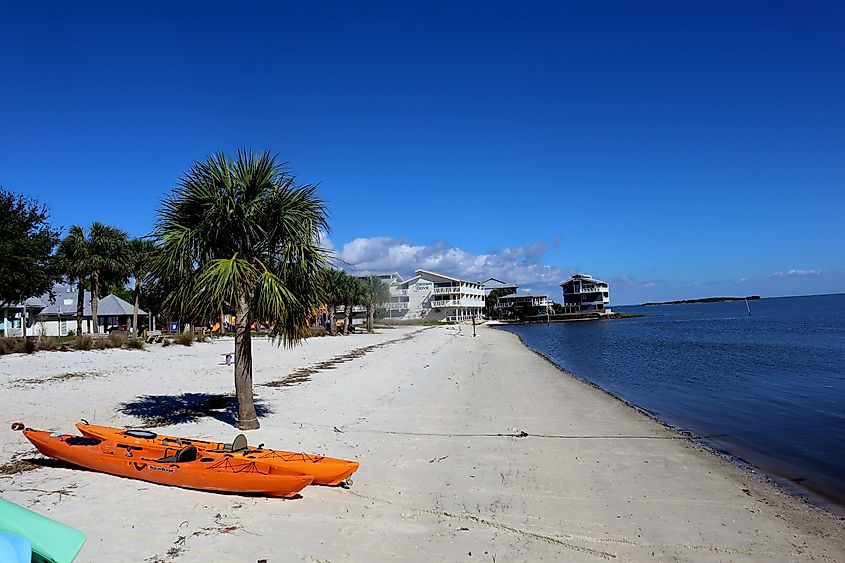
Begin at Cedar Key Museum State Park to examine St. Clair Whitman's seashell cabinets and the brass 1920s astrolabe recovered from Atchafalaya Bay, open Thursday through Monday. For a tasty bite, Steamers offers panoramic Gulf sunsets, towering platters of fresh Cedar Key clams and shrimp, friendly dockside service, and a breezy upstairs bar. Next, tour the Cedar Key Historical Society Museum's 1896 hurricane exhibit inside the cedar-sheathed Lutterloh Building. Finish at Cemetery Point Park; the 900-foot boardwalk looks onto Waccasassa Bay Preserve, where roseate spoonbills drift over oyster bars while bottle-nosed dolphins break the channel's last light. Visitors often linger nearby listening to fiddlers.
Apalachicola
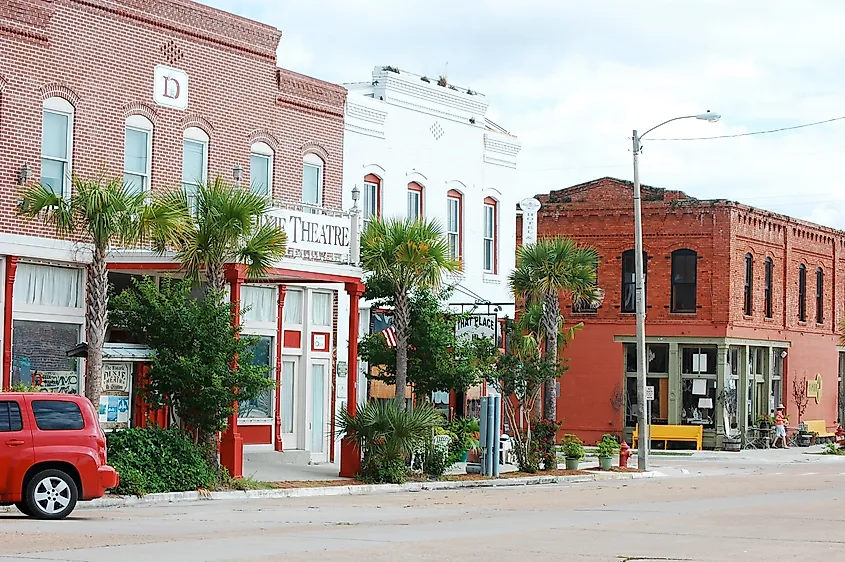
Apalachicola lines the north bank of its namesake river three miles before it meets the Gulf, a geography that made the town the third-busiest cotton port on the coast by 1850. Ninety surviving ante-bellum warehouses still frame Water Street, and the 1838 Trinity Episcopal Church, rafted here in pieces from White Oak Creek, houses Florida's oldest pipe organ. Inventor John Gorrie demonstrated mechanical refrigeration downtown in 1851, securing the first U.S. patent for artificial ice and pioneering modern air-conditioning.
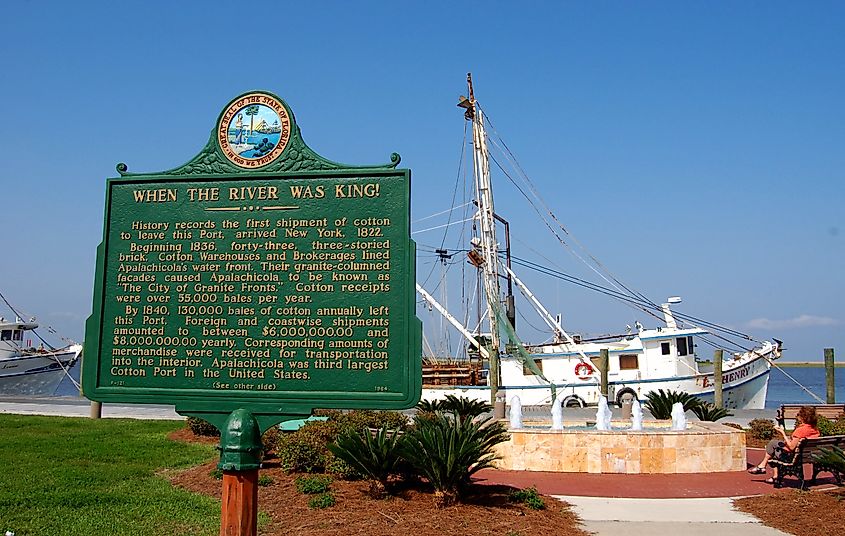
Cross Avenue E to the John Gorrie Museum State Park; its replica ice machine rattles through a fifteen-minute cycle while docents explain the malaria experiments that inspired it. Walk six blocks to the Apalachicola National Estuarine Research Reserve Nature Center for touch-tanks stocked with juvenile gag grouper and a working oyster-boat display. Finish on the second-floor deck at Up the Creek Raw Bar, ordering oysters harvested that morning from leased reefs while shrimp trawlers idle at Scipio Creek Marina. Servers log first-time guests in a handwritten notebook, ensuring the next greeting arrives by name.
Micanopy
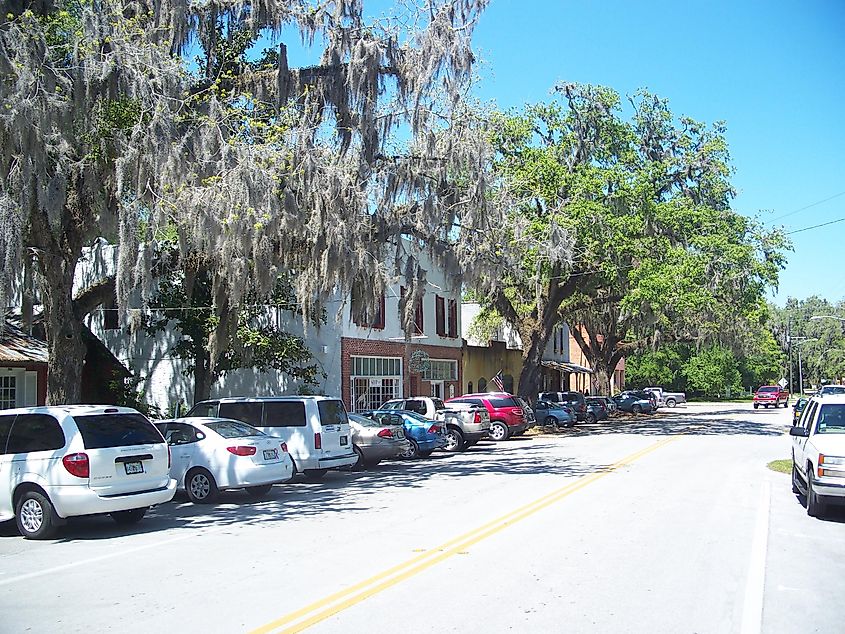
Micanopy was chartered in 1821 under Spanish authority, making it Florida's oldest inland municipality; its seal still bears the name of Seminole Chief Micanopy, reflecting a rare charter negotiated directly with Indigenous residents. Cholokka Boulevard's storefronts survive almost unchanged since 1895, a visual authenticity that turned the town into the principal set for the 1991 film Doc Hollywood, screened every October on an outdoor wall opposite the Herlong Mansion. Only 648 residents appeared in the 2020 census, a scale that keeps introductions brief and friendships immediate.
Begin at Paynes Prairie Preserve State Park; the 50-foot tower on the La Chua Trail overlooks free-roaming bison and cracker horses descended from 17th-century Spanish stock. Return to town for smoked turkey at Pearl Country Store & Barbecue, a gas-station café where ranchers queue beside University of Florida professors. Spend an hour inside the Micanopy Historical Society Museum, housed in the 1890 Thrasher Warehouse, to study the Seminole-War field journal kept by surgeon Frederick Weedon. Conclude at Mosswood Farm Store & Bakehouse; its screened porch doubles as a listening room for Friday night fiddle sessions, and newcomers are routinely handed washboards so the rhythm section never lacks volunteers.
High Springs

High Springs grew at the 1885 junction of two Savannah, Florida and Western Railway phosphate spurs; the Victorian depot still displays the night agent's last telegraph. Aquifer vents ring the city limits, supporting more first-magnitude springs within five miles than anywhere else in North America. The 2023 estimate lists 6,917 inhabitants, yet the town maintains one traffic light and redirects after-hours utility calls to the fire chief's phone.
Begin seven miles south at Ichetucknee Springs State Park; rent an inner tube at the North Entrance and float the 72-degree river past eelgrass beds patrolled by Suwannee bass. Drive back for blackened redfish at The Great Outdoors Restaurant, housed in the 1895 opera house whose heart-pine rafters survived the 1911 depot fire. Continue east to Ginnie Springs Outdoors; certified cave divers descend Devil's Eye sink while freedivers photograph limestone ledges in the emerald basin. Conclude with a pint of Santa Fe River Red at High Springs Brewing Company; regulars keep a community tab that covers the first beer for anyone announcing a birthday, a practice posted on a chalkboard that has never been erased.
Monticello
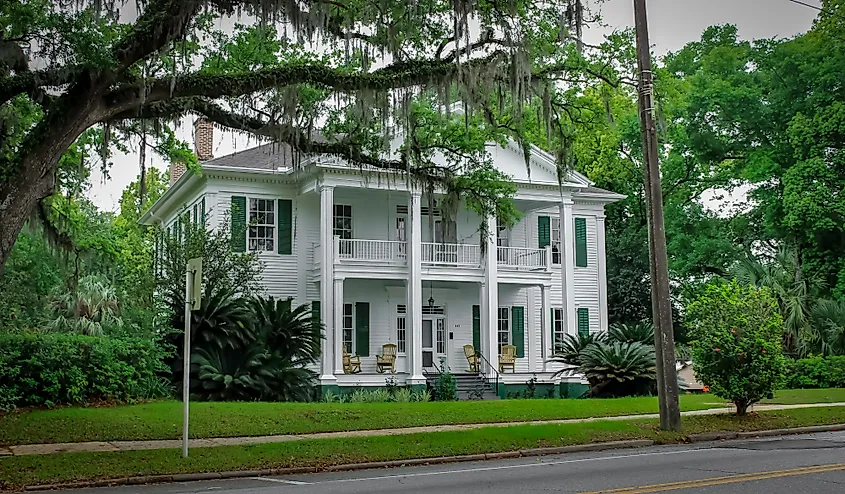
Monticello sits at the crossroads of U.S. 19 and 90, yet no stoplight governs the junction; Jefferson County banned signals on the courthouse square to preserve clear sightlines to its 1909 brick-and-copper dome, still topped by the original Seth Thomas clock. The entire 48-block downtown appears on the National Register of Historic Places, the only Florida county seat whose core is listed in its entirety.
Tour the Monticello Opera House, once the Perkins Block mercantile, where the third-floor fly loft still shows scorch marks from carbide footlights. Walk one minute east to Tupelo's Bakery & Cafe for sourdough pizza topped with locally foraged chanterelles; tables are built from reclaimed longleaf pine. Cross Dogwood Street to inspect the Jefferson County Courthouse; deputies will unlock the rotunda on request so visitors can view the 1908 Dimmick bell. Finish with a three-mile ride on the Monticello Bike Trail, a paved rail bed ending at an abandoned Seaboard Air Line trestle; helmets are loaned free at city hall, underscoring the town's habit of removing barriers for short-term guests and lifelong residents alike without advanced paperwork.
DeFuniak Springs
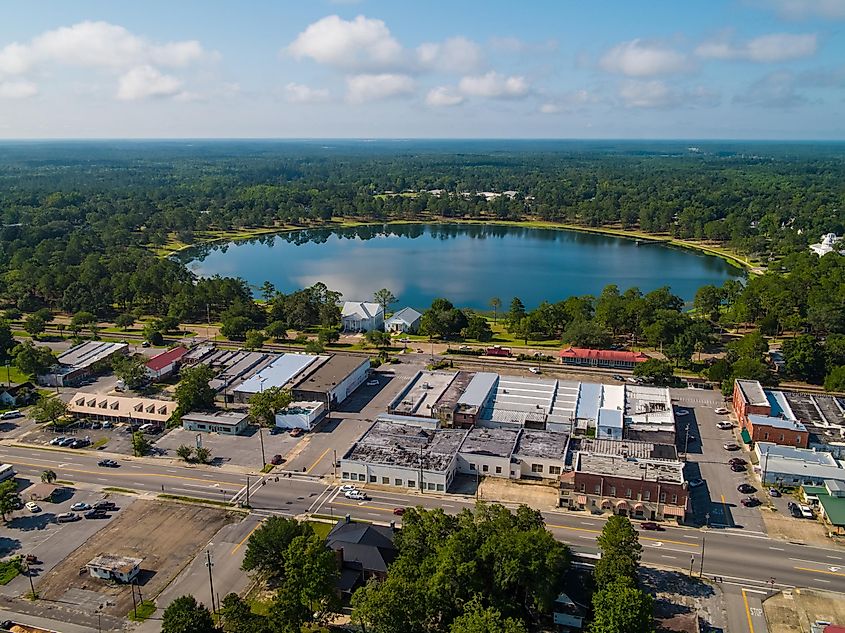
DeFuniak Springs grew around a perfectly circular 40-acre sinkhole lake; geological surveys record a diameter variance under two feet, placing Lake DeFuniak among only two truly round natural lakes worldwide. From 1885 through 1922 the town hosted Florida's Chautauqua Assembly, attracting Clara Barton and Booker T. Washington, and many of the gingerbread cottages built for their lectures still line Circle Drive. The 2025 roster records 5,919 permanent residents, yet downtown bookshops still close on handshake promises during lunch.
Start with a two-kilometre walk around Lake DeFuniak; bronze plaques identify the 1887 Wesley House, the Classical-Revival Woman's Club and the surviving hardwood columns of the Chautauqua auditorium. Continue three blocks to the Walton County Heritage Museum inside the 1882 L&N depot, where a hand-crank phone connects visitors directly to the telegrapher's logbooks. Drive U.S. 331 north to Chautauqua Vineyards & Winery; free tastings pour estate-grown Carlos muscadine alongside Florida Rosé, and pickers willingly discuss brix counts when asked.
Arcadia
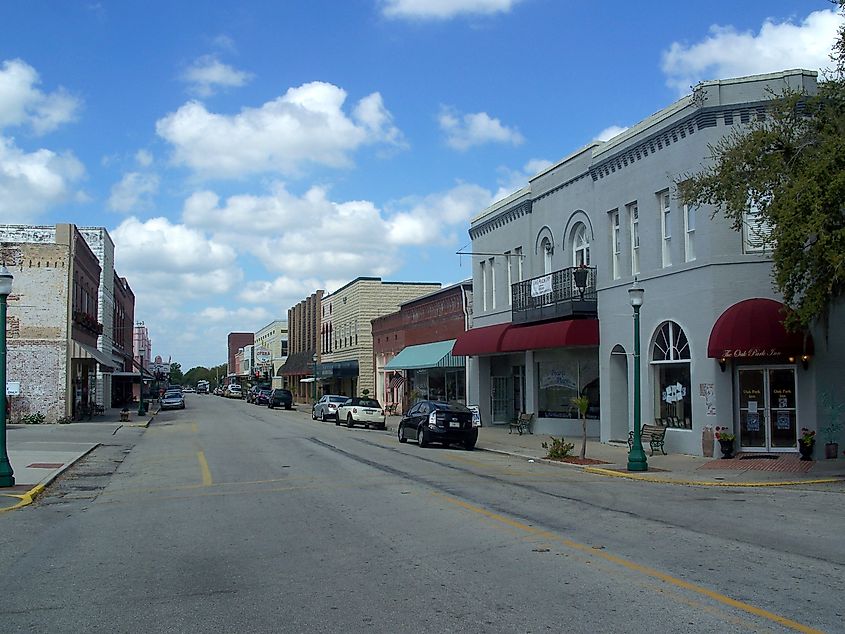
Arcadia occupies the highest ground along the upper Peace River, a position that spared its brick core from the 1926 flood that erased neighbouring cow camps and concentrated DeSoto County commerce under one small-town roof. The Arcadia All-Florida Championship Rodeo, founded in 1928 by returning World War I cavalrymen, predates Madison Square Garden's national finals and still opens with the same Seminole rider circling the arena carrying a patchwork flag. The 2024 estimate counts 7,420 residents.
Begin at the Rodeo Arena to examine bull rope braided from Cuban sisal and the bronc saddle of 1939 champion Earl Nix. Launch a kayak downstream at Peace River Canoe Outpost; guides supply sifting screens for megalodon teeth and Pleistocene horse molars routinely found in gravel bars. Finish with chicken-fried steak at Wheeler's Café, operating since 1929; the waitress still rings orders on a brass National register and slides a wooden token across the counter that locals redeem for free coffee next visit on cool mornings.
Dunnellon
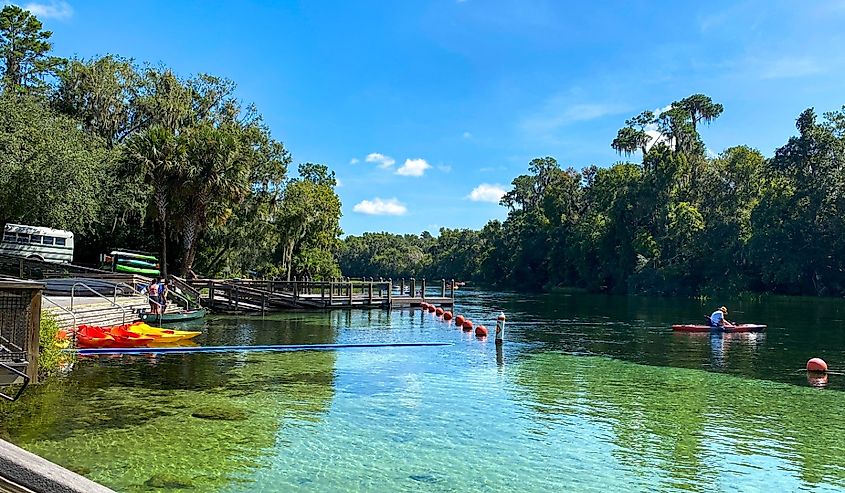
Dunnellon exploded overnight after phosphate was uncovered under Duke's Swamp in 1889; by 1891 the town hosted five newspapers and Florida's first electric streetlights, yet the boom collapsed within fifteen years, leaving carefully platted Victorian streets that never filled. The 2020 census lists 2,021 residents, and many live in houses framed from repurposed mining-tram rails visible in attic crawlspaces.
Begin at Rainbow Springs State Park: walk the Civilian Conservation Corps waterfalls path to the headspring, then swim the sapphire basin where American eels migrate 1,400 miles from the Sargasso Sea. Cycle the paved Blue Run of Dunnellon Trail from County Road 484 to the Withlacoochee Confluence Boardwalk; interpretive panels display mastodon teeth dredged during phosphate excavation. Break for blackened grouper tacos at Swampy's Bar & Grille, cantilevered over the Rainbow River on pilings marked with yearly flood levels. Spend the afternoon browsing The Historic Village Shops of Dunnellon, especially Grumbles House Antiques, operating in the 1902 doctor's residence; the owner keeps a ledger of items paired to buyers' family stories, ensuring each purchase links newcomer to local memory and including a hand-drawn map to hidden river boils, which she requests be returned for the next curious visitor.
Crystal River
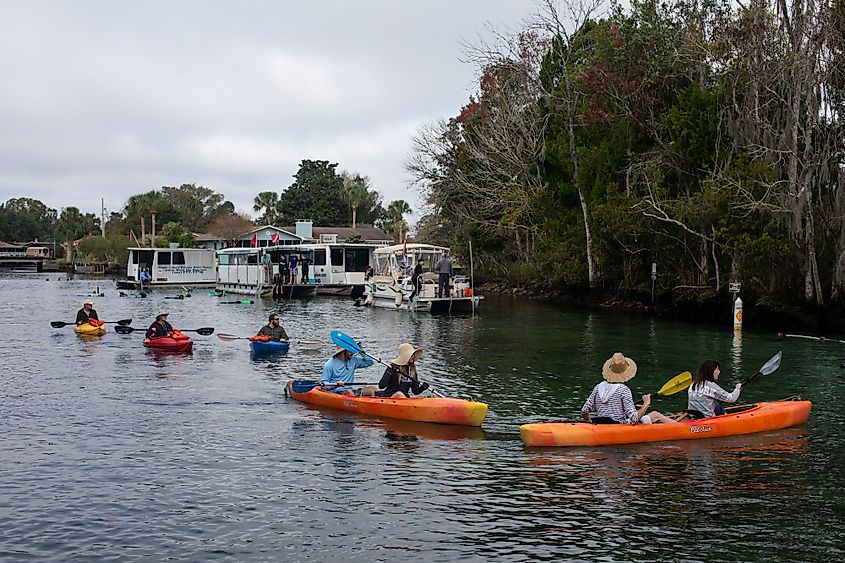
Crystal River fronts the 600-acre spring complex of Kings Bay, whose constant 72-degree discharge invites hundreds of West Indian manatees each winter; the U.S. Fish and Wildlife Service authorises in-water viewing only here, making the town the nation's single legal venue for swimming beside the species. Archaeologists trace occupation back 2,500 years at shell temple mounds upriver, and the 2020 census counts just 3,586 residents guarding that continuity.
Secure a refuge permit at Three Sisters Springs and enter the water at Idiots Delight Spring; rangers enforce passive observation while manatees ascend to breathe within arm's length of snorkellers. Drive north to Crystal River Archaeological State Park; climb Temple Mound H at sunset for a horizon still free of modern buildings. Launch a kayak from Hunter Springs Park, drifting through tidal creeks shaded by Sabal palms before beaching at Jurassic Spring for freshwater rinses. End with blackened tripletail at Seafood Seller & Café inside the old Crackers mall; Chef Ron wears Saints livery every game day and routinely comps bread pudding to first-time patrons arriving still zipped into neoprene. Servers tuck waterproof maps in takeaway bags, guiding night paddles back toward remote boat slips safely.
Quincy
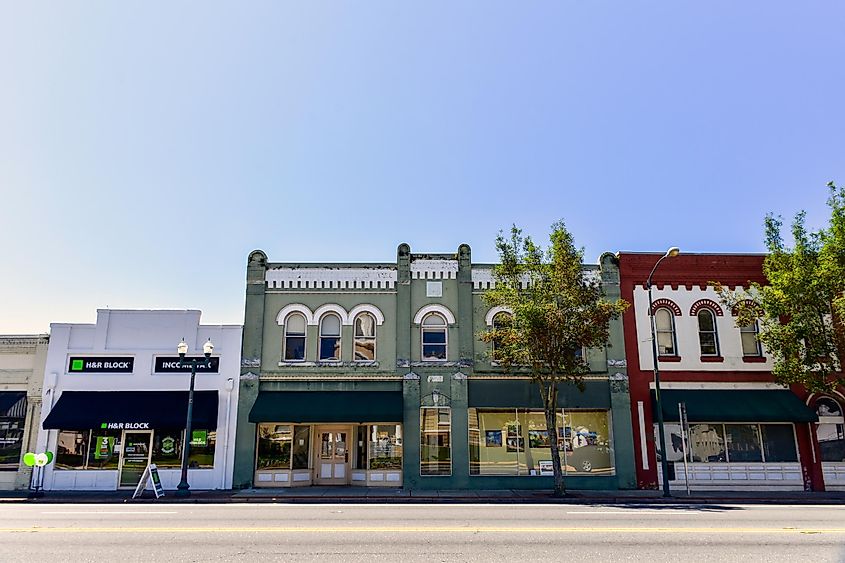
Quincy's bankers persuaded shade-tobacco farmers to buy Coca-Cola shares between 1919 and 1936; by the 1960s the town reputedly held more Coke stock per capita than anywhere else, funding scholarships that continue today. The National Register lists 71 contributing structures, all financed by cigar-wrapper tobacco profits and defined by deep verandas that kept delicate leaves dry during summer storms.
Start inside the Gadsden Arts Center & Museum, housed in the 1912 Bank of Quincy; its main vault now protects regional realist canvases, and docents trace the provenance of each piece to specific farm families. Follow the free Historic Quincy Walking Tour app along King Street to the red-brick Leaf Theater, where 1949 carbon-arc projectors still run nitrate test reels each spring. Drive ten minutes south to Lake Talquin State Park; hike the Bluff Trail for panoramic views of the 10,000-acre impoundment created by Florida Power in 1927. Return for supper at Damfino's Café & Market in the restored Bell & Bates hardware building; the chef accepts Coca-Cola certificates in lieu of cash twice annually, a courtesy extended to visitors as readily as to multigeneration shareholders.
Our 2,000-mile detour proves Florida's warmest welcomes hide far from condo canyons and crowded causeways. In Cedar Key, Monticello, or Crystal River, strangers exchange names before forecasts; in Micanopy or Quincy, history is introduced like family heirlooms. Follow the live-oak tunnels, listen for church bells, trust the porch-wave index. You'll depart with river silt on your shoes, local directions in your pocket, and an open invitation to return again soon.
